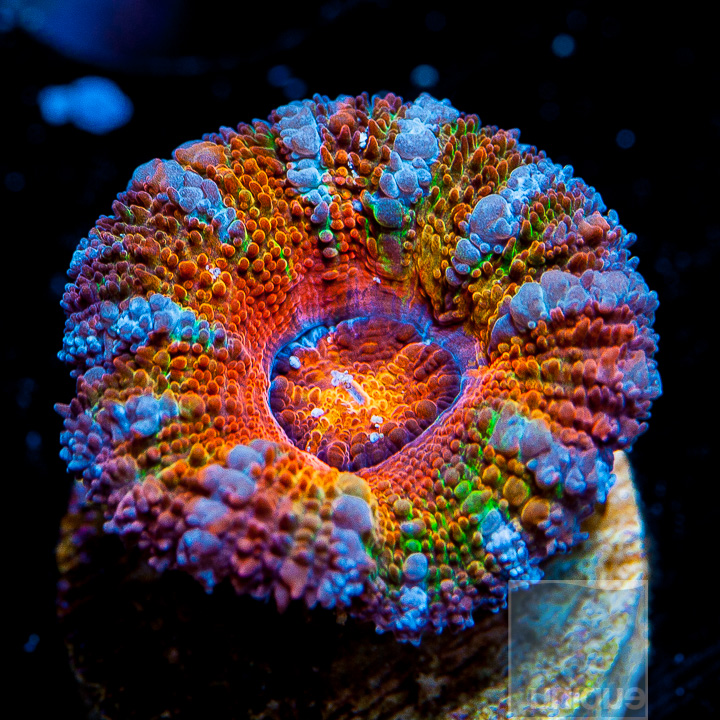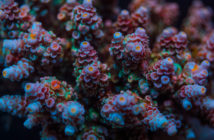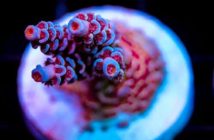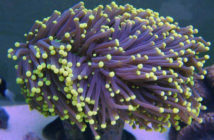The UC Rainbow Acan (Acanthastrea lordhowensis) originated as a wild colony collected of the coast of Australia. The UC Rainbow has been in captivity in Unique Corals grow out facility for over 18 months. As you might imagine, only a limited number of frags are available at a time. Unique Corals is growing the mother colony under Kessil LED lighting and T5 lamps. For water movement, they are using a gentle flow setting on a Gyre wavemaker. Unique Corals is also using the Triton Labs method along with Two Little Fishies AcroPower Amino Acids for supplemental feeding.
If you are receiving one of these frags or one of a similar nature, it is recommended that the frags be attached to a larger rock in the aquarium using a reef epoxy. Keeping them secured in place will help insure faster growth and survivability. We have found that frags will heal up and encrust plugs more quickly if they are target feed with a high quality LPS (Large Polyp Stony) coral food sized with pellet sizes between 200 and 1000 microns.
When feeding LPS corals, it is important to remember that they, and many other LPS corals, are nocturnal, so ideally one should target feed them at night. That being said, the corals will adapt to regular daytime feedings and you will notice that they will begin to display their nematocyst laden feeding tentacles during the daytime if night time feeding is not an option. Acans seem to prefer solid foods but they can absorb liquid nutrients found in the water column. If the bulk of their food is absorbed from the water column, they will grow, but at a slower pace. If you are looking for fast growth rates, healthier corals and more vibrant colors (who isn’t?) then we recommend feeding the coral polyps 1-3 times per week.
To target feed this coral and other LPS corals, it’s best to turn off all tank pumps before you begin direct feeding to the mouths of the coral polyp. Turning the pumps off will give the coral polyp time to capture it’s prey and bring it into the gut before it is blown off the surface of the polyp by too much water movement in the aquarium.






